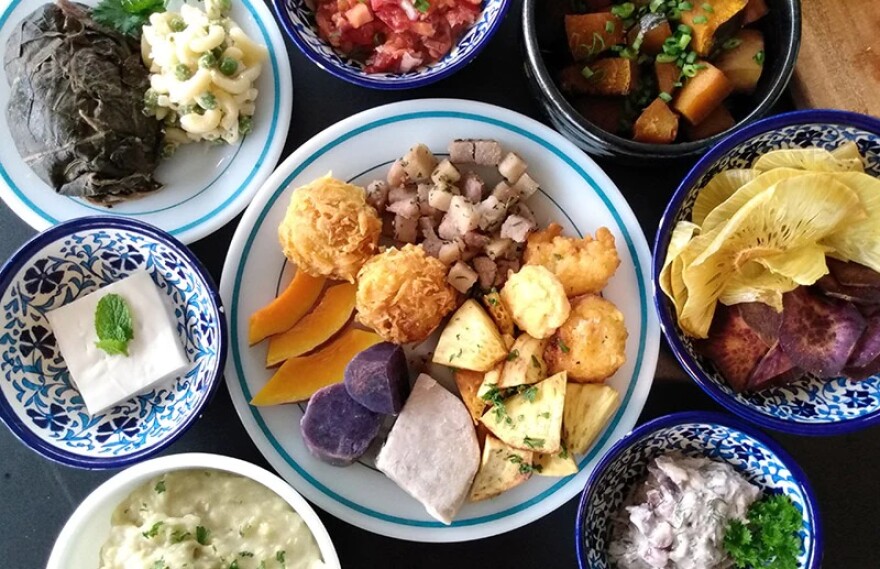A statistic most people in Hawaiʻi know is that 85% to 90% of our food is imported. But the food group in which we’re the least self-sufficient is staples like rice, wheat and potatoes.
To help Hawaiʻi families shake their dependence on imported staples, the Hawaiʻi ʻUlu Cooperative is working to provide recipe-ready packs of locally grown staples like ‘ulu or breadfruit.
Dana Shapiro, general manager of the Hawaiʻi ʻUlu Cooperative, says she’s excited about the recent rollout of recipe-ready packs of Hawaiʻi-grown staples.
"So the recipe ready packs are 12-ounce pre-cooked, peeled, and frozen packs of four Hawaiian grown starches," says Shapiro. "In addition to ʻulu, we have kalo, ʻuala, and palaʻai or pumpkin."
These packs are available at a variety of local retailers including Longs Drugs, Times, Safeway, and more. Every pack has a chef-created recipe on the back for those who may not be too sure about how to use locally-grown Hawaiian staples.
"Weʻre really trying to make these products accessible for families in Hawaiʻi, for everyday consumers to incorporate them into their diets," says Shapiro.
The Hawaiʻi ʻUlu Cooperative was formed in 2016 by nine small family farmers united by a passion for ʻulu. Over the past six years, the group has grown to include 125 farmers across three islands.
Shapiro says part of the mission is to return locally-grown staples to Hawaiʻi dinner tables.
"Hawaiʻi imports over 99% of its staple foods, primarily rice, wheat and potatoes," says Shapiro. "So by transitioning to eat more locally grown staples, you're making a huge difference to the food security of our islands, the economic resilience, the viability of farming. So we really want to enable more everyday people in Hawaii to eat locally grown staples."
For a list of retailers and more chef-tested, kid-approved recipes visit eatbreadfruit.com.





